Spring’s First Fruit | Strawberries Delight
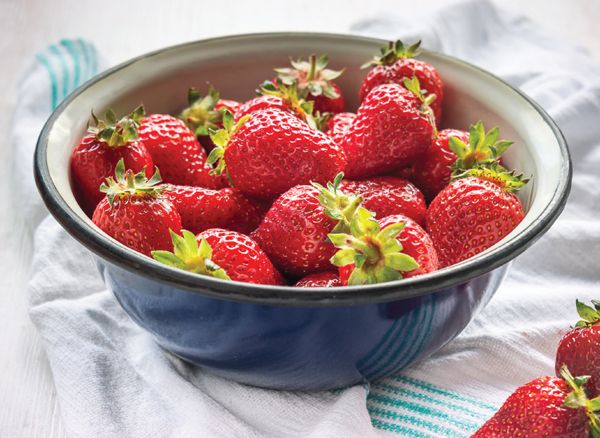
In the classic children’s book by Don and Audrey Wood, The Little Mouse, The Red Ripe Strawberry, and The Big Hungry Bear, the narrator tricks a small mouse into sharing one single strawberry, clearly demonstrating just how delicious a strawberry can be. And after all, what morsel of fruit could impart more delight and more flavor than a delicious red and ripe strawberry?
We can thank the ancient Romans for cultivating strawberries. While we may see the strawberry as a sweet harbinger for spring, the Romans saw the berry as a symbol of Venus, the goddess of love, and the French viewed les fraises as an aphrodisiac; it’s no wonder that these ruby gems of fruit are now the world’s most popular berries. These days avid gardeners can choose from among more than 600 varieties of strawberries.
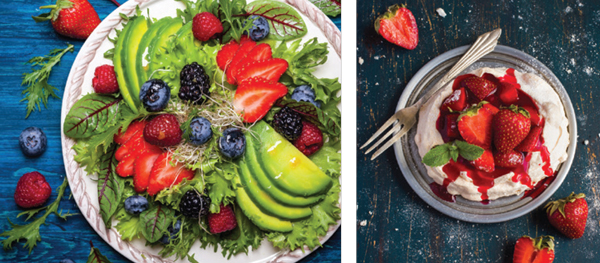
From simple joy to super food
The strawberry might not cause Cupid to shoot his bow, but it may do other kinds of wonders for your heart: strawberries supply a wealth of nutrition. Yes, within one little berry, you’ll find vitamins, soluble fiber, and high levels of certain antioxidants (polyphenols). In fact, a single serving of strawberries provides half of your daily vitamin C requirement. This tiny fruit holds a substantial amount of manganese, potassium and folate, too.
Consuming more strawberries points to a wide range of health benefits, including improved heart health, lower blood sugar levels, and possibly reduced joint inflammation. Of course, incorporating more fruits and vegetables tends to improve overall health, so you might as well go ahead and enjoy nature’s tastiest treats this season!
Planting strawberries
The strawberry heralds a time of colorful and bountiful produce that we welcome after a steady winter of root vegetables and whatever remnants of last year’s harvest we remembered to can or freeze. It only makes the plant even sweeter to know that the strawberry plant supplies a lovely ground cover—this fruit makes for a beautiful border. (Do keep in mind that if you’re using strawberry plants as an easy green ground cover, they won’t require much maintenance, but because of that, they won’t bear as much fruit.)
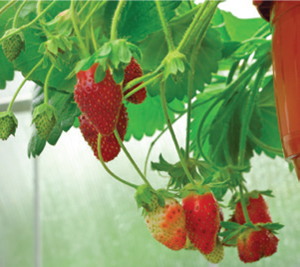
If you’re planting strawberries for edible purposes, determine how you’ll use the berries. Are you an avid baker and love to make strawberry desserts? Do you hope to yield enough berries to make a few batches of your grandmother’s homemade jam recipe? Will you relish eating them out of hand?
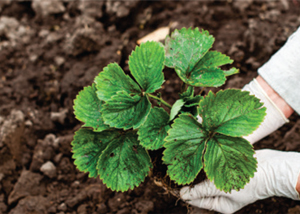 Next, determine if you have well-draining soil; this is necessary for strawberry-growing success for ground planting. Find a space in your garden that receives a healthy dose of both sunlight and be sure to mulch the plants so that they have something to rest on other than pure soil. (Of course, you can also grow strawberries in containers.)
Next, determine if you have well-draining soil; this is necessary for strawberry-growing success for ground planting. Find a space in your garden that receives a healthy dose of both sunlight and be sure to mulch the plants so that they have something to rest on other than pure soil. (Of course, you can also grow strawberries in containers.)
Gardeners rejoice, for you have several options of strawberry plants that perform well in our region:
- June-bearing plants, which peak from May–June
- Day-neutral plants, which supply berries regularly from early spring to late fall
- Everbearing plants, a misnomer since the plant yields berries in spring and in fall—not year-round
According to the Virginia Cooperative Extension, the best strawberries to plant in Virginia include: Allstar, Delite, Delmarvel, Earliglow, Honeoye, Lateglow, Ozark Beauty, Redchief, Sunrise, Surecrop, Tribute and Tristar. It’s a worthwhile time investment to have a chat with your favorite local garden center or Master Gardener to discover which variety will serve your needs and your garden best.
You can begin your adventure with strawberry plants right away. Find the sunniest spot in your home—usually a south-facing room or a sunroom. Pot the plants in a traditional strawberry pot or in a hanging basket (strawberries have small root balls and don’t require a pot more than eight inches deep and ten inches wide). Whichever container you choose, fill it with controlled-release fertilizer. Be sure to fan out the roots within the soil, and check to see that the crown of the plant is even with the surface.
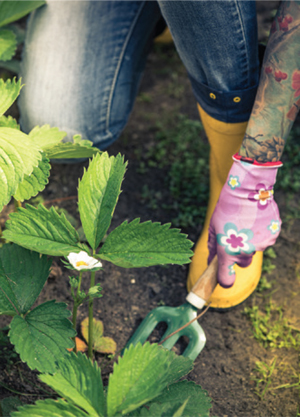 Over the next six weeks, water the plant every day and pinch off any blossoms that appear. Prior to planting in the ground, trim off any dead leaves and trim the roots to a few inches long (between 4 and 5 inches). Soak the shortened roots for an hour or two before bringing the plant into your outdoor garden.
Over the next six weeks, water the plant every day and pinch off any blossoms that appear. Prior to planting in the ground, trim off any dead leaves and trim the roots to a few inches long (between 4 and 5 inches). Soak the shortened roots for an hour or two before bringing the plant into your outdoor garden.
You might have to protect your plants from the birds, but you won’t have to worry about sharing your strawberries with big hungry bears, and who knows? Maybe the French were onto something. Strawberries serve as a sweet reminder to indulge in life’s simple pleasures.
Whether you adore a bowl of fresh berries and cream, slice a couple of berries onto your cereal, or bake a tart with your very own homemade jam, celebrate the new season ahead. ✦
Allstar, antioxidants, aphrodisiac, Delite, Delmarvel, Earliglow, folate, Honeoye, Lateglow, manganese, Ozark Beauty, potassium, Redchief, Romans, Strawberries, Sunrise, Surecrop, Tribute, Tristar, Venus






